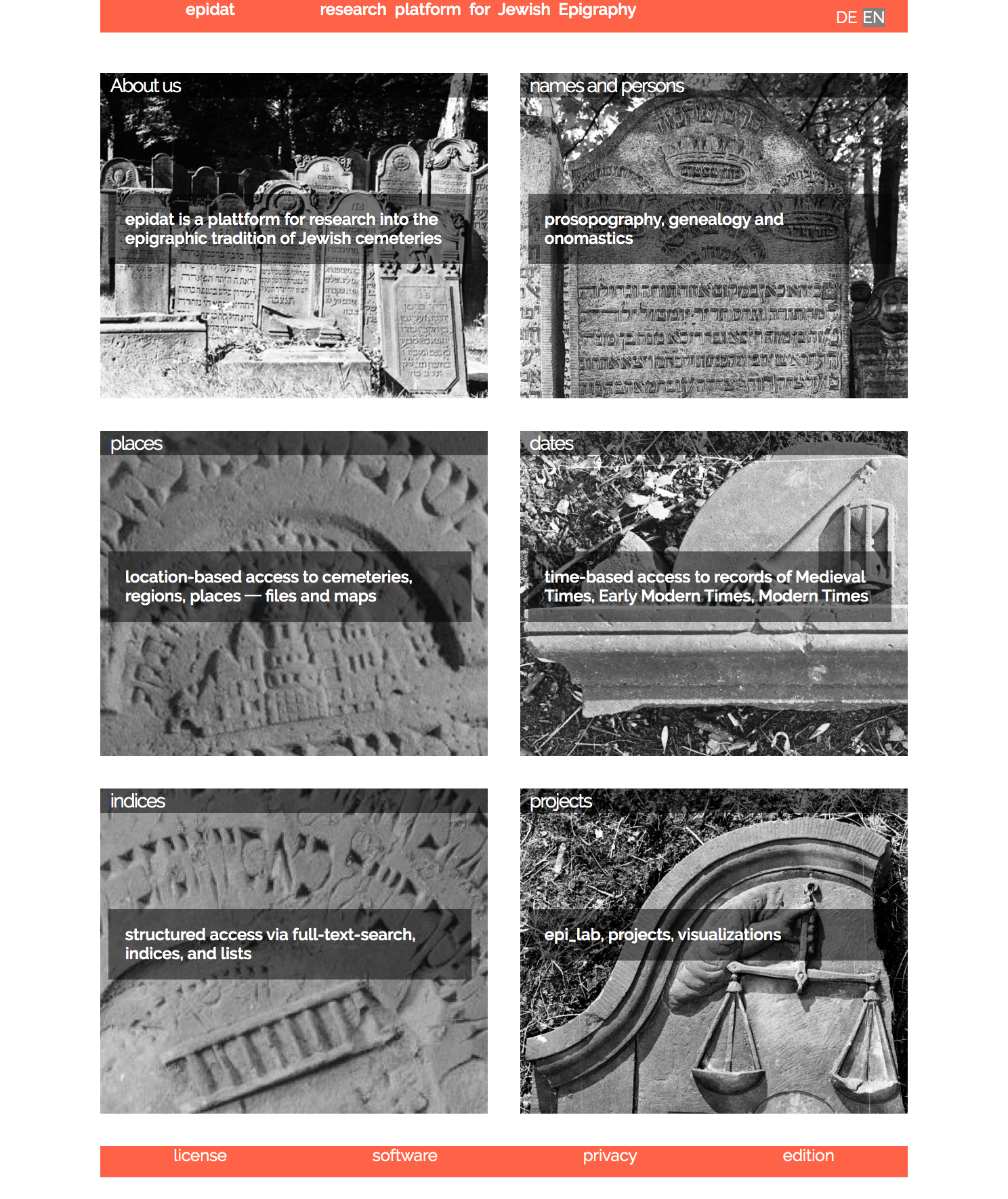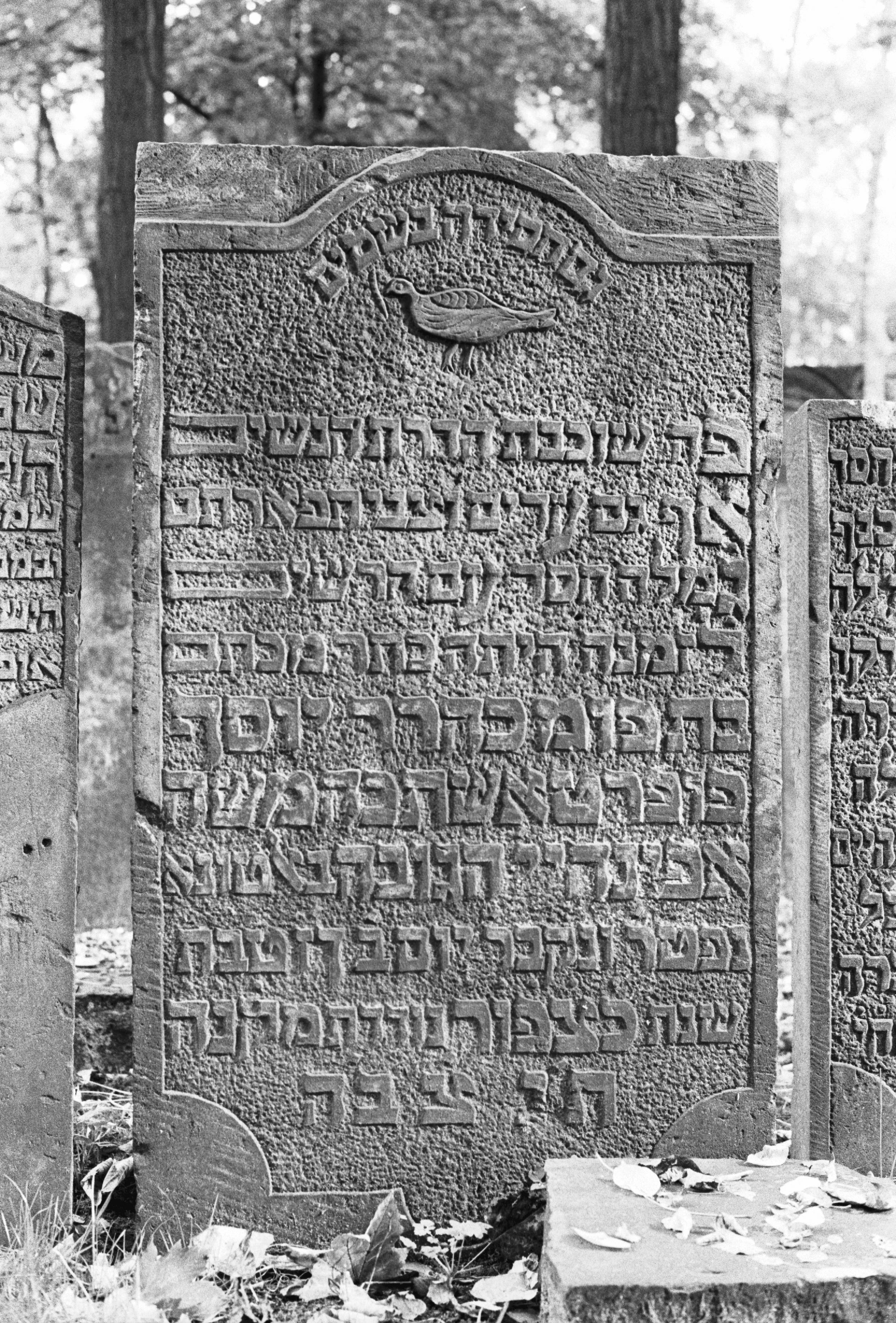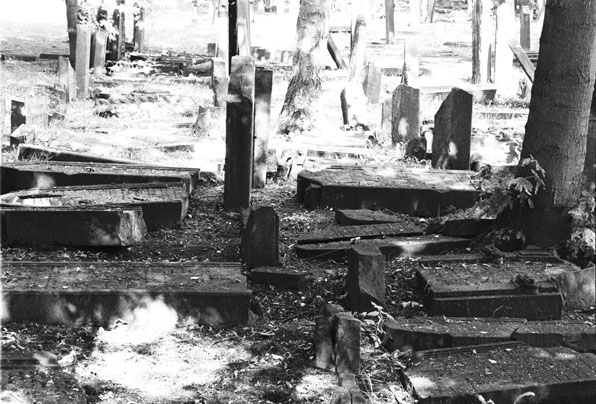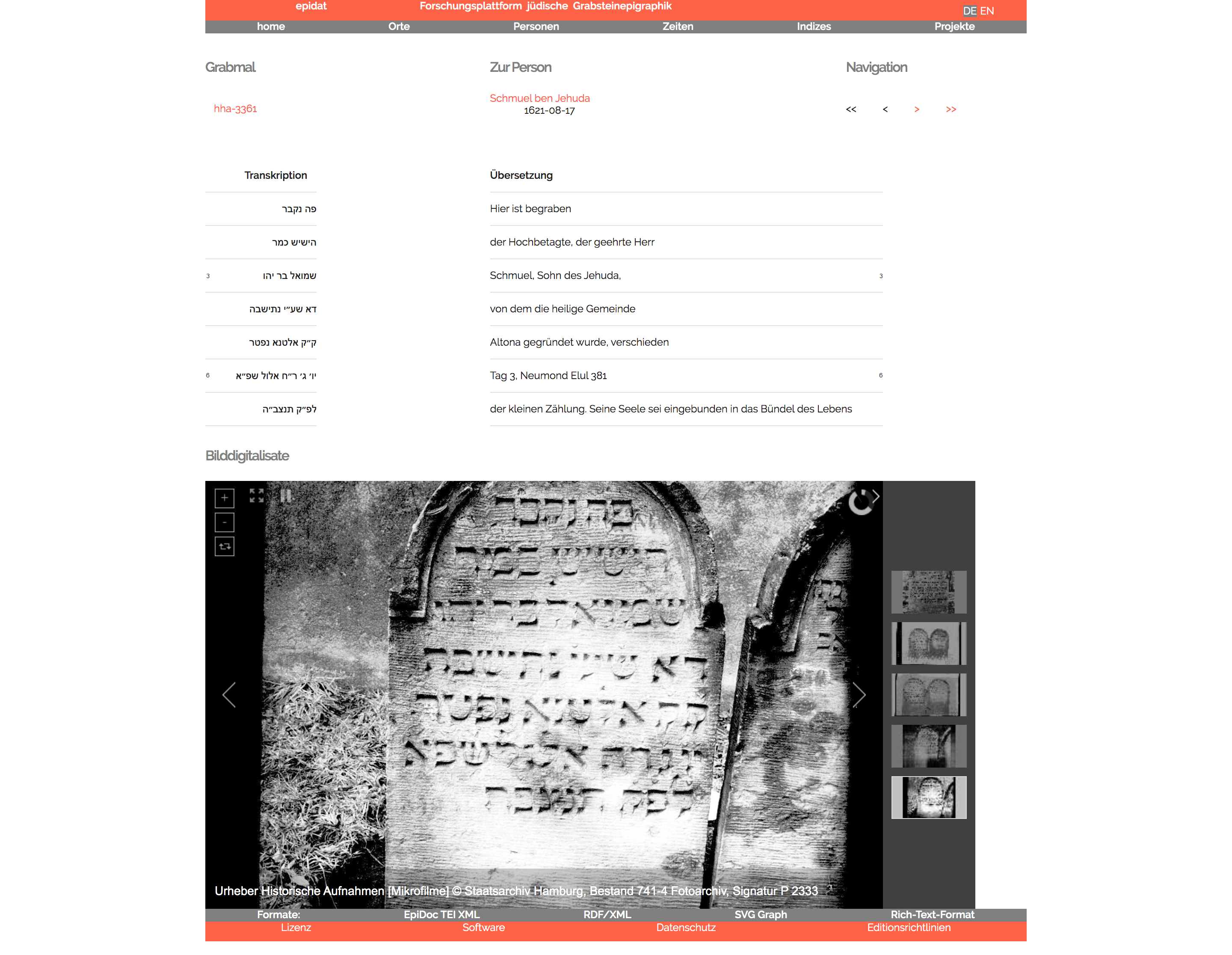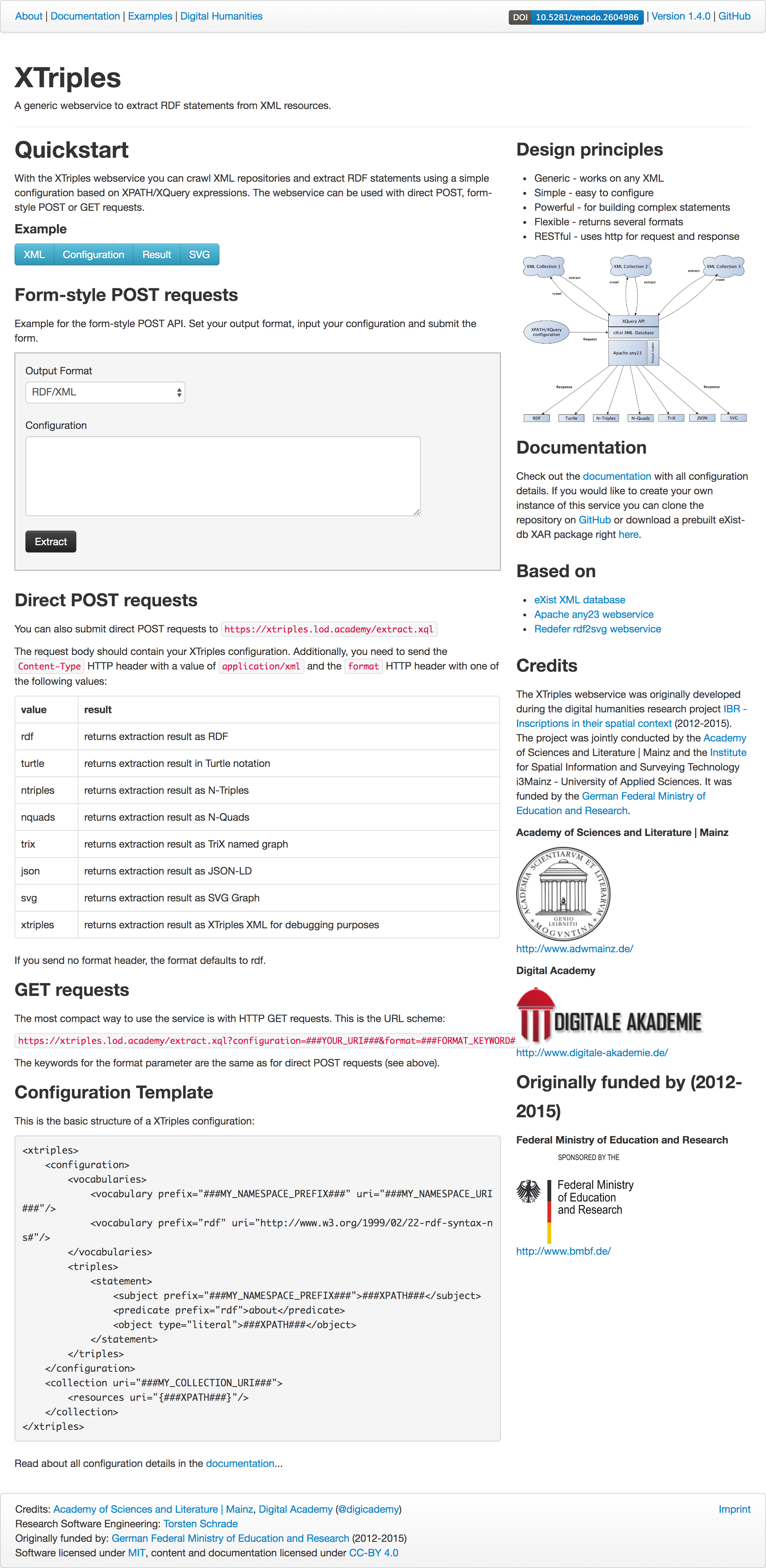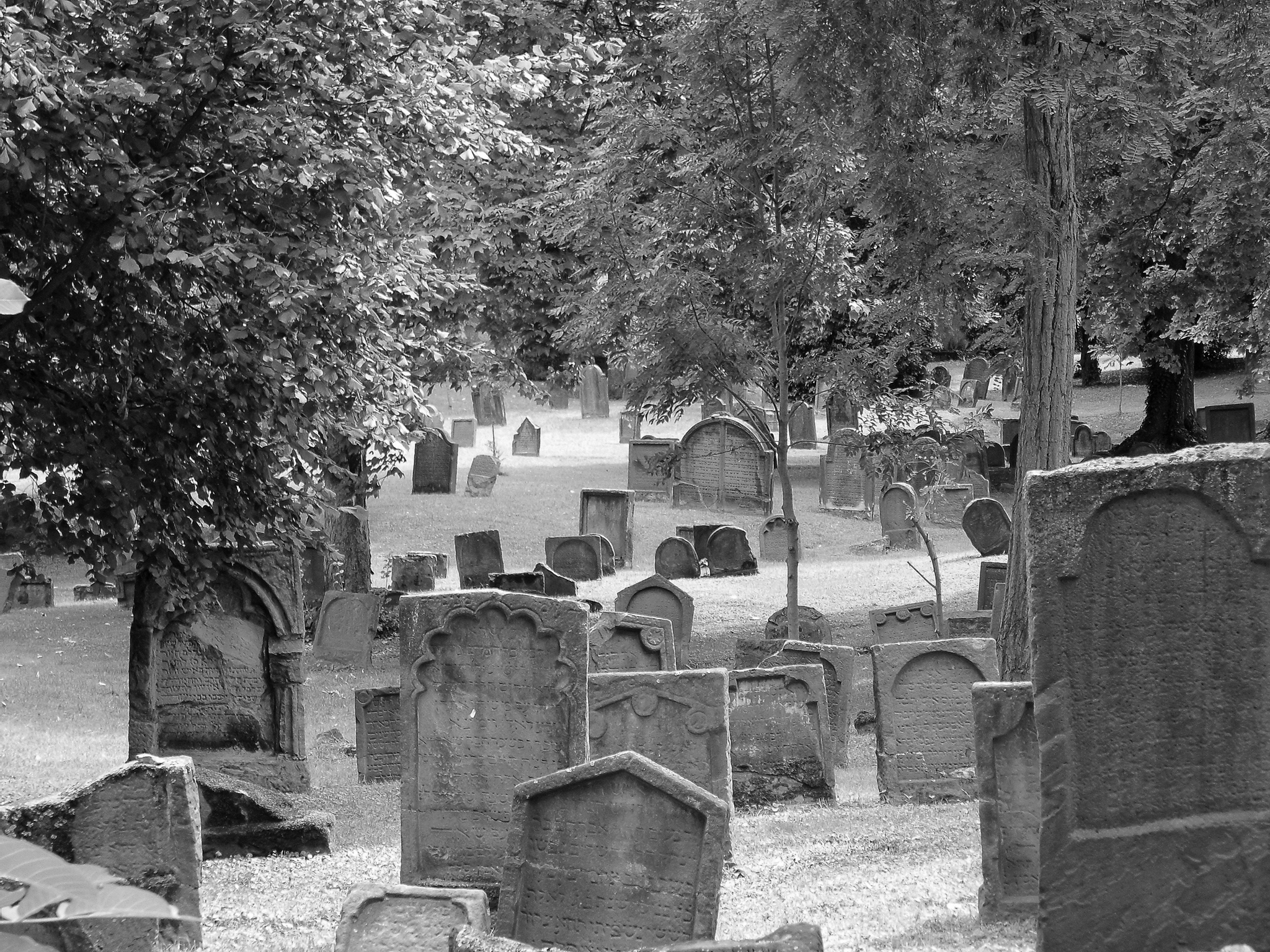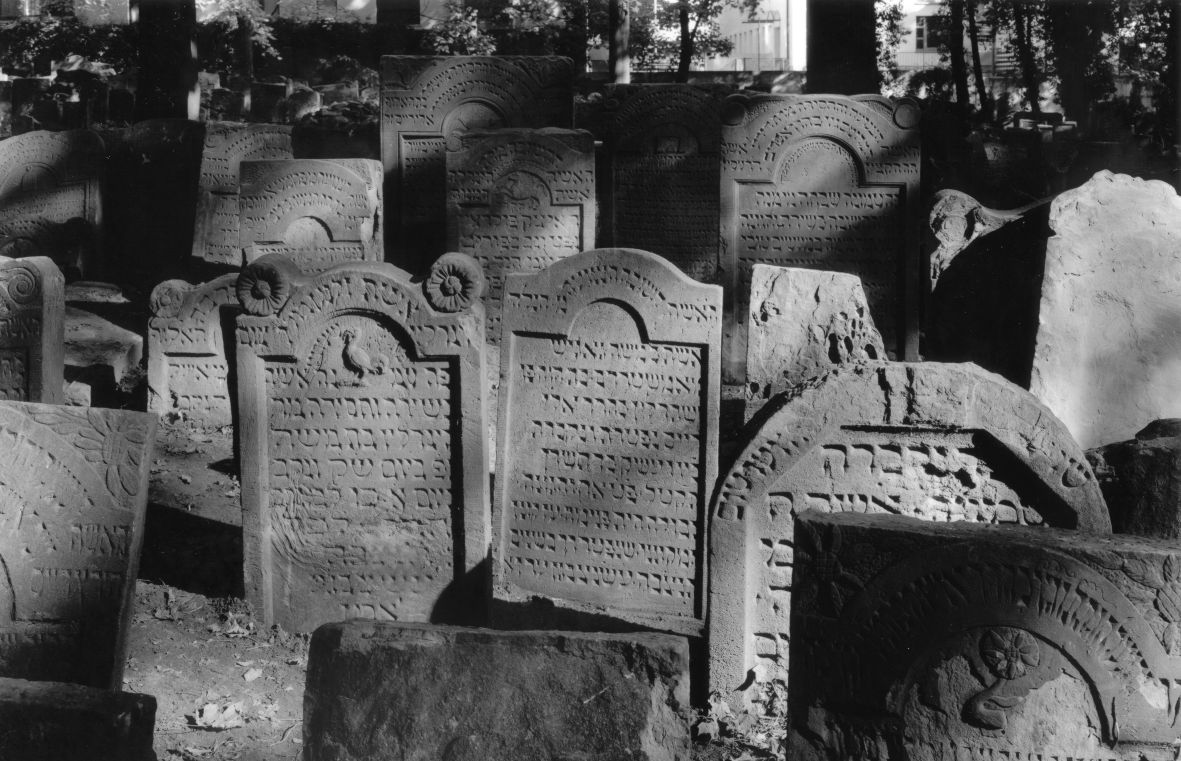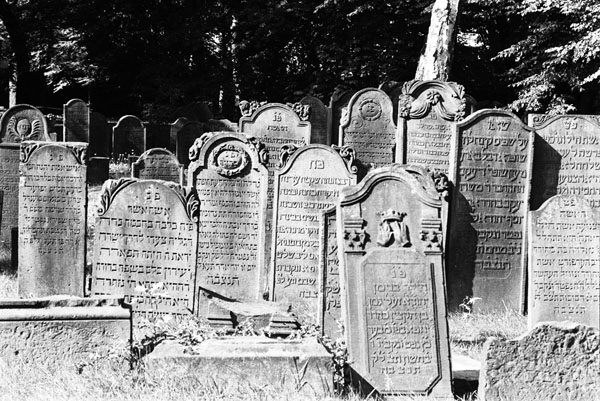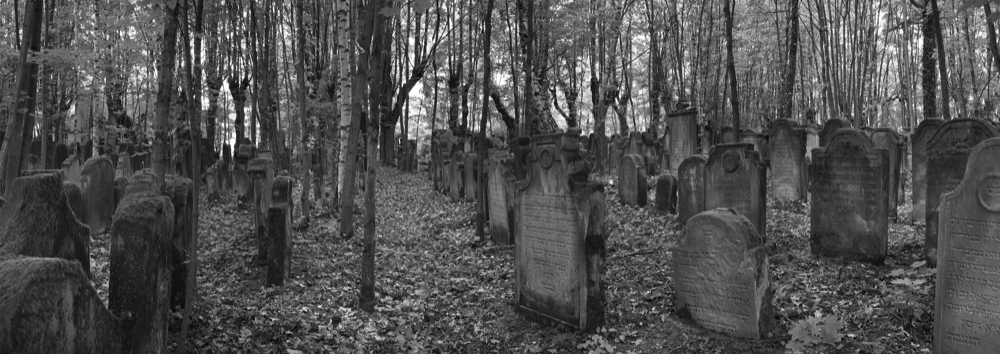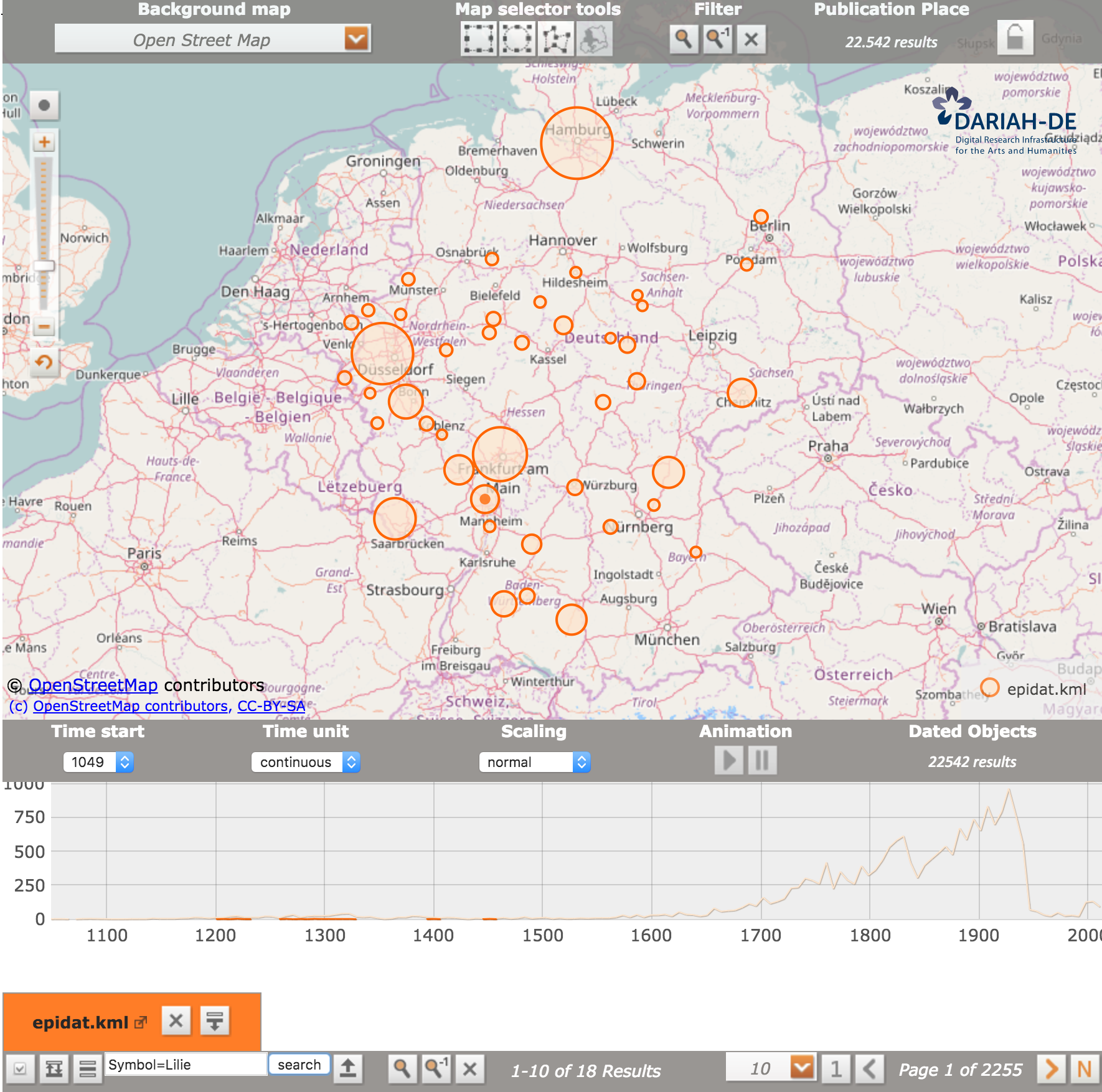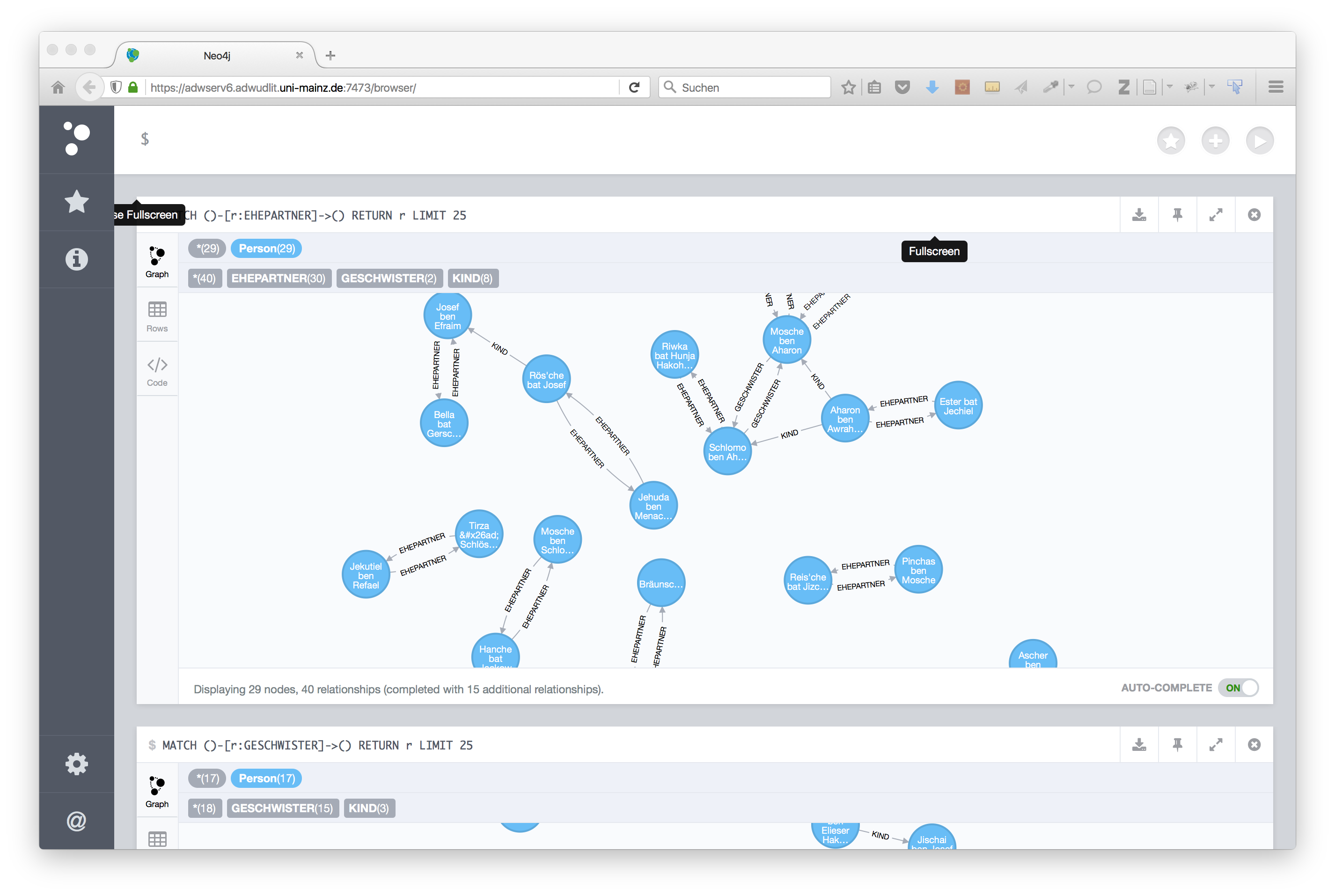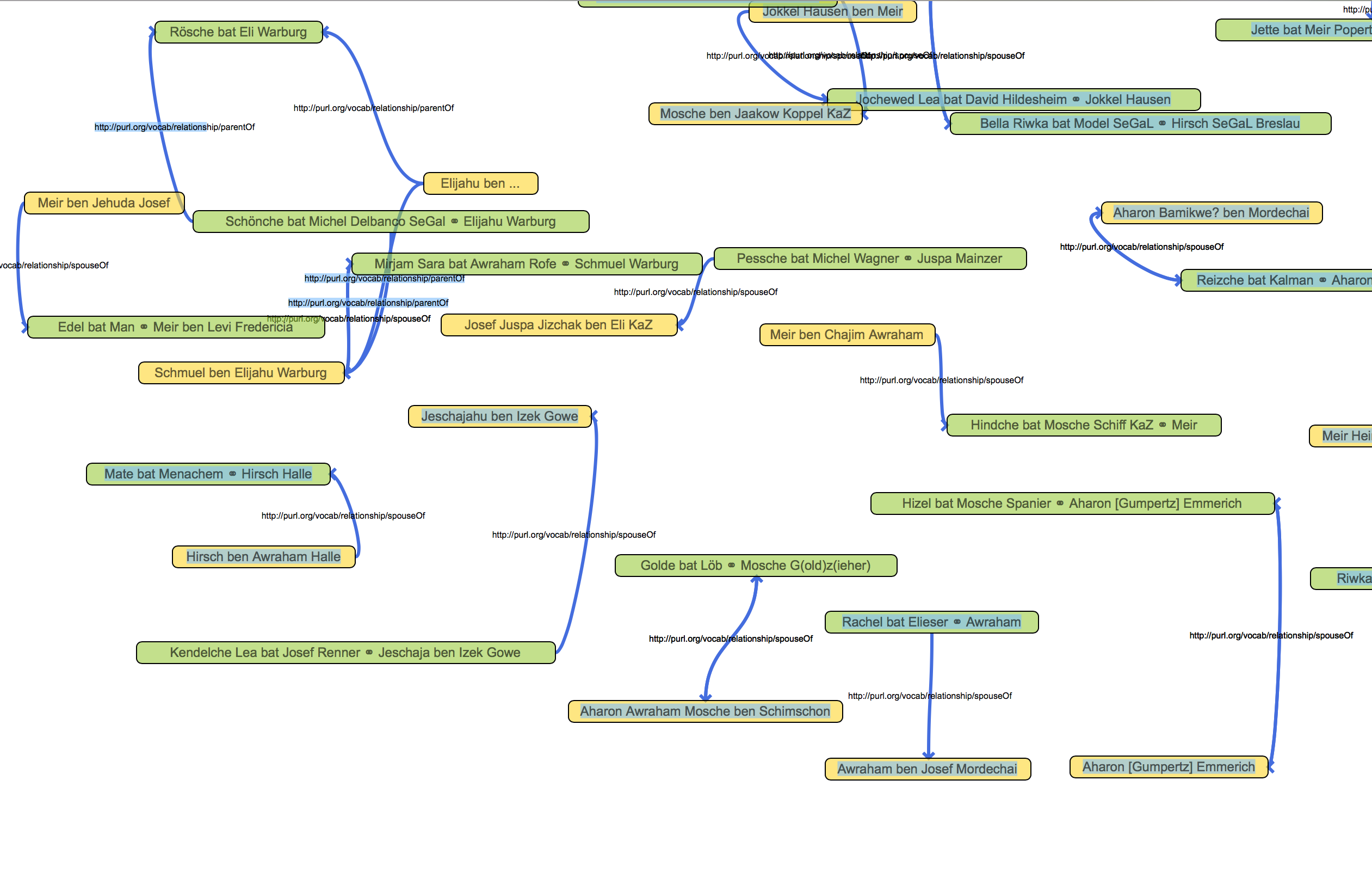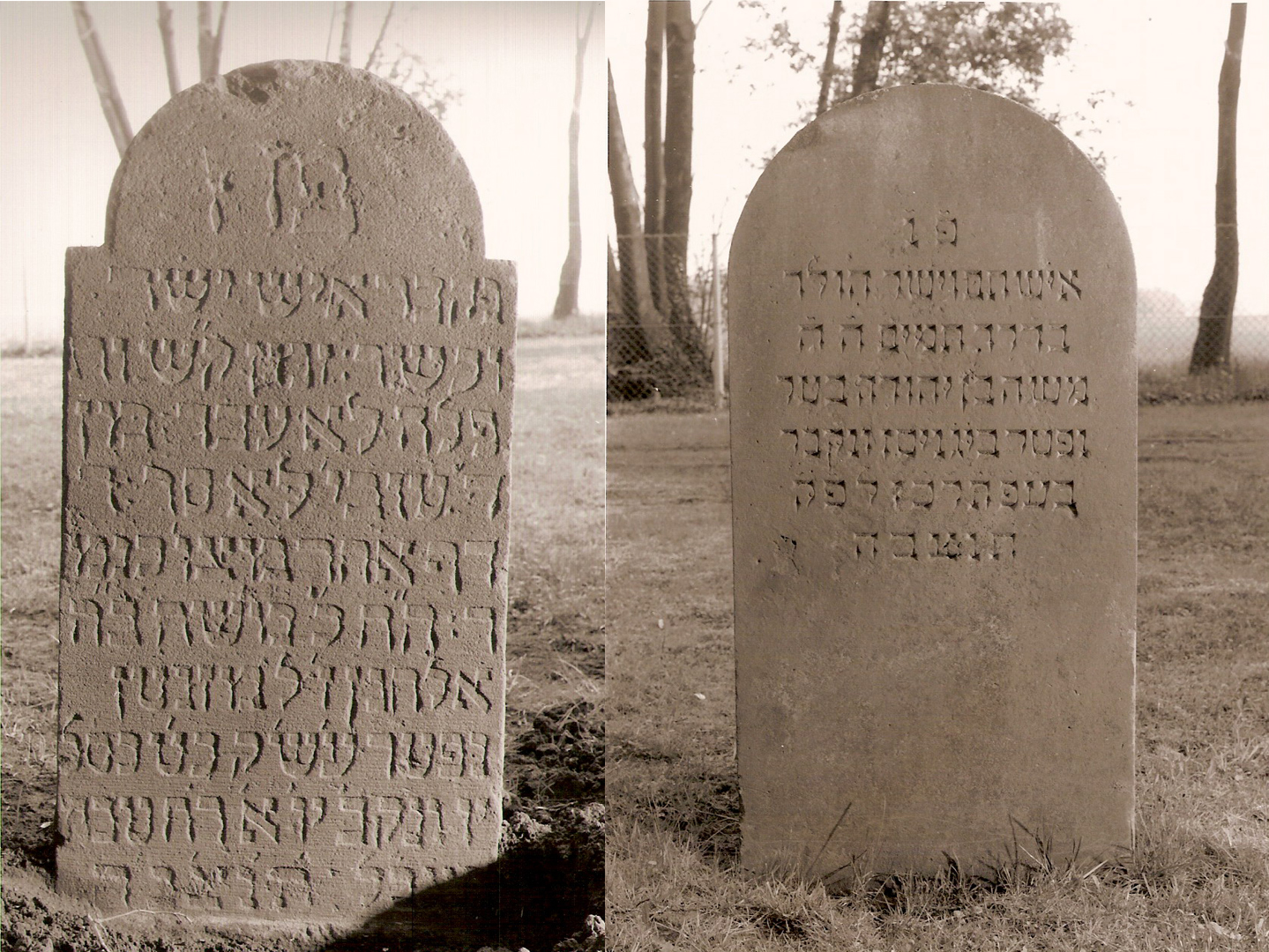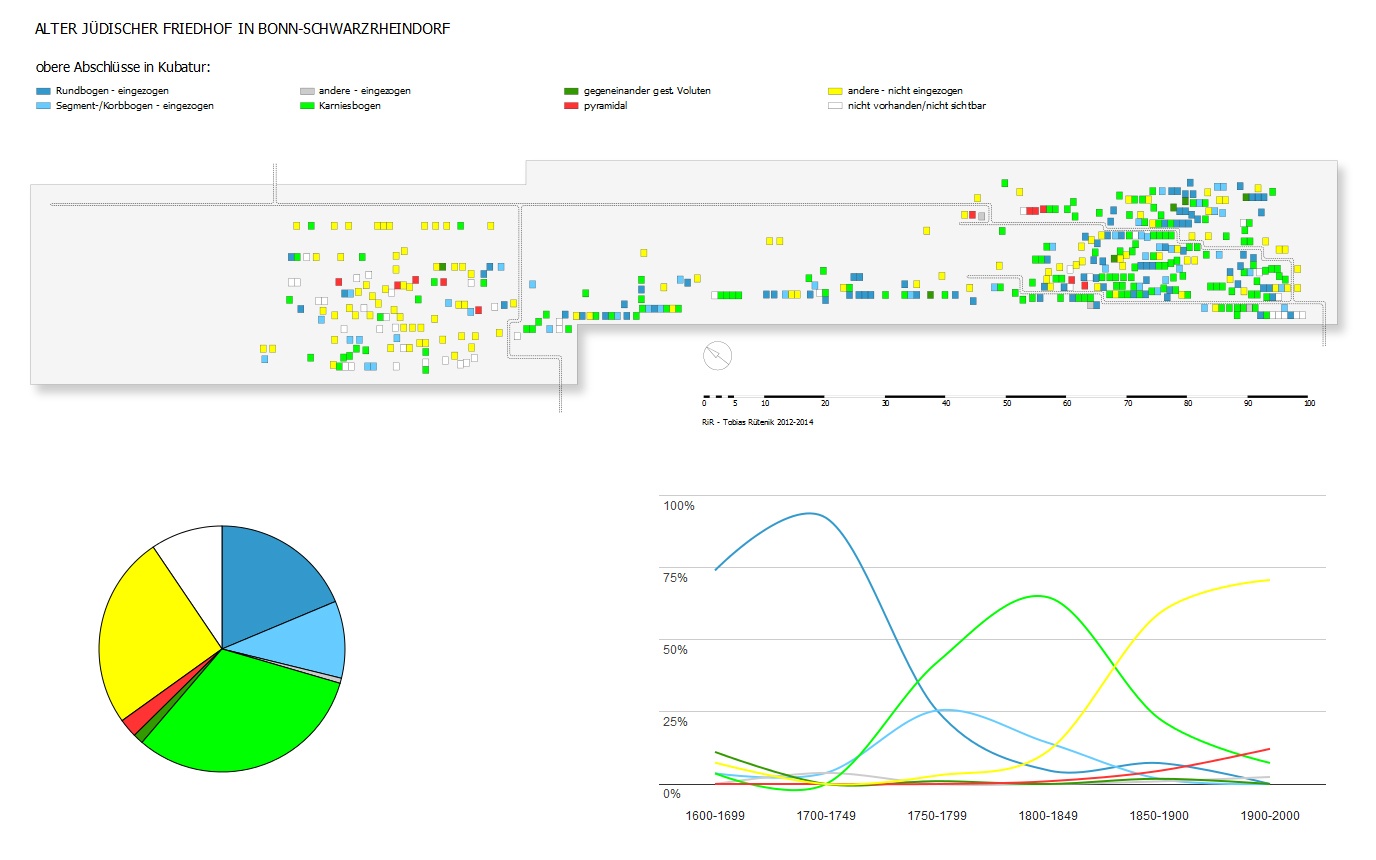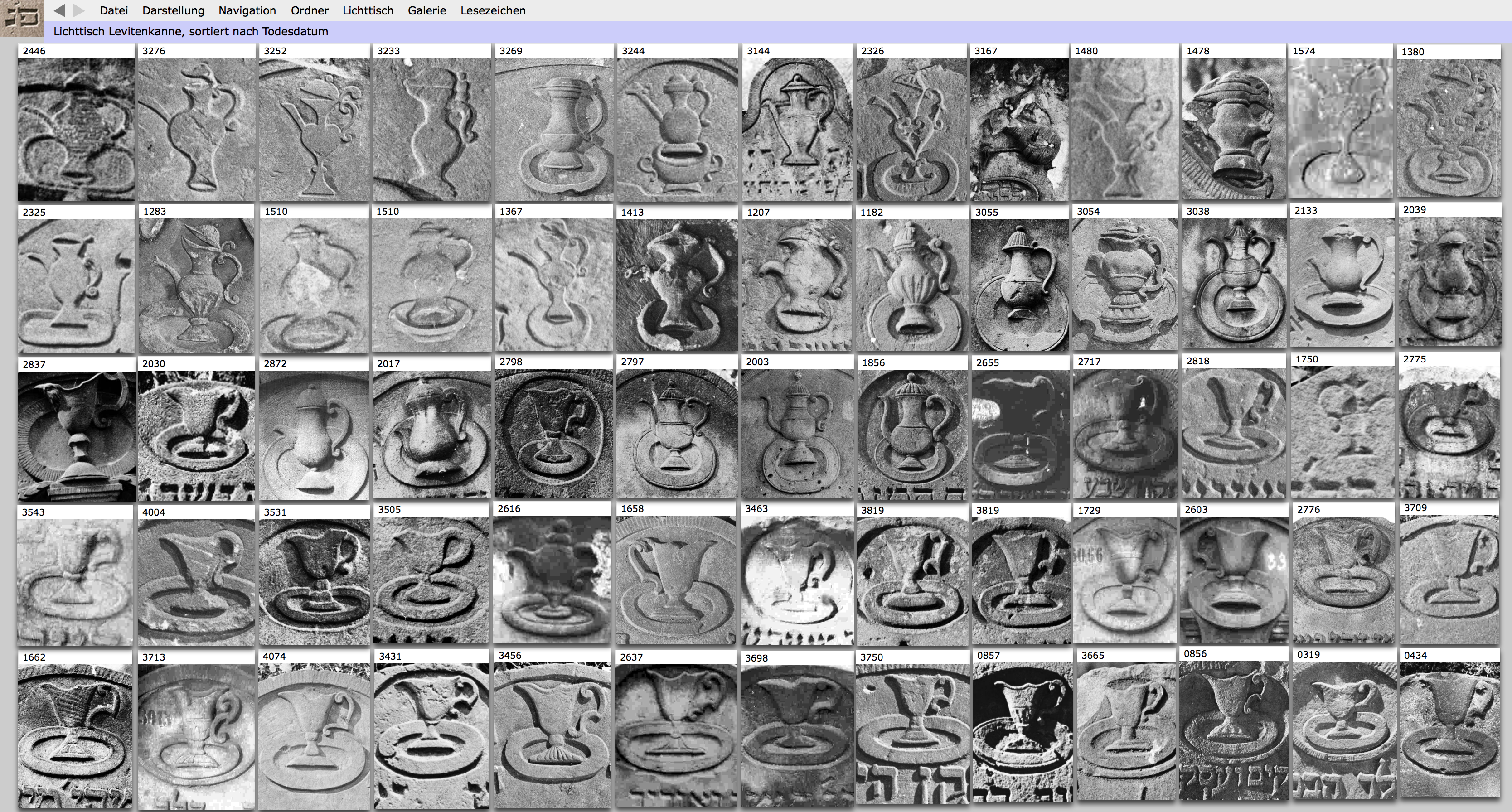2020-02-19 Hamburg
epigraphy.info workshop_4
epidat – research platform for Jewish Epigraphy
Interface, Re-Use and cooperations (2002-today)
online https://digicademy.github.io/2020_epigraphy.info
Thomas Kollatz, Akademie Mainz | Digitale Akademie Mainz | CC-BY 4.0
history
- 2002 set up as a database in order to manage the inventarisation of about 6.000 headstones from the Ashkenazic Cemetery in Hamburg-Altona (1621-1871)
- data ingest by a team of 10-12 researchers
- remote access | server based
- since 2006 online
- since 2008 epidat provides research data also according to Epidoc TEI XML
- more projects followed – the ongoing development of epidat is driven by projects and scientific cooperations
- since 2019 epidat is developed in a scientific cooperation between Steinheim-Institute | Essen and Academy of Science and Literature | Mainz


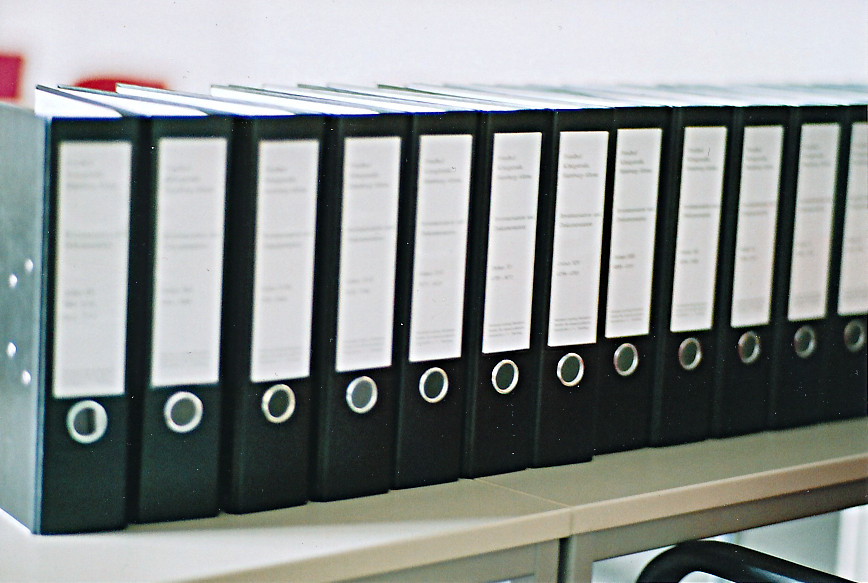
Hamburg-Altona, Königstraße
(fotos: above B. Sommer,
below: M. Brocke)
start page of beta version (2020-02)
What is epidat
epidat is a database
As a database for Jewish gravestone epigraphy, epidat
is used to inventory, document, edit and present epigraphic holdings. Currently inscriptions of Jewish cemeteries from nine centuries and four countries are made available via
chronological, spatial and
thematic approaches.
epidat is a research plattform
As a research platform for Jewish gravestone epigraphy, epidat offers open interfaces to the research data and is involved in interdisciplinary research projects and cooperations in the context of digital epigraphy and Jewish Studies.
epidat is a long-term epigraphic project
Epidat started in 2002 has been continuously developed since then. The database and research platform was launched online in 2006. Since March 2019 epidat is jointly developed within the framework of a scientific cooperation between the Salomon-Ludwig-Steinheim-Institute, Essen and the Academy of Sciences and Literature | Mainz.
time
From 11th until 20th century. Currently 1.100 dated medieval inscriptions from seven communities
space
- Germany [194]
- Lithuania [5]
- The Netherlands [7]
- Czechia [5]
spatio-temporal access options
- by year, month, day
- by period
- full-text search in one, several or all collections
- within one single cemetry
- within a region
- with spatio-temporal geobrowser
| epidat research data | |
|---|---|
| fair principle | Findable Accesible Interoperable Re-usable |
| licence | are released online under an open Creative Commons Licence  |
standard format |
are provided in EpiDoc: TEI XML for Epigraphic Documents for machine readable, system-independent, program-independent and structured access (and widely used by digital epigraphers) |
interoperability |
are mapped to authority files, controlled vocabularies and thesauri |
interfaces |
are provided via a machine readable interface |
source for cultural and religious history
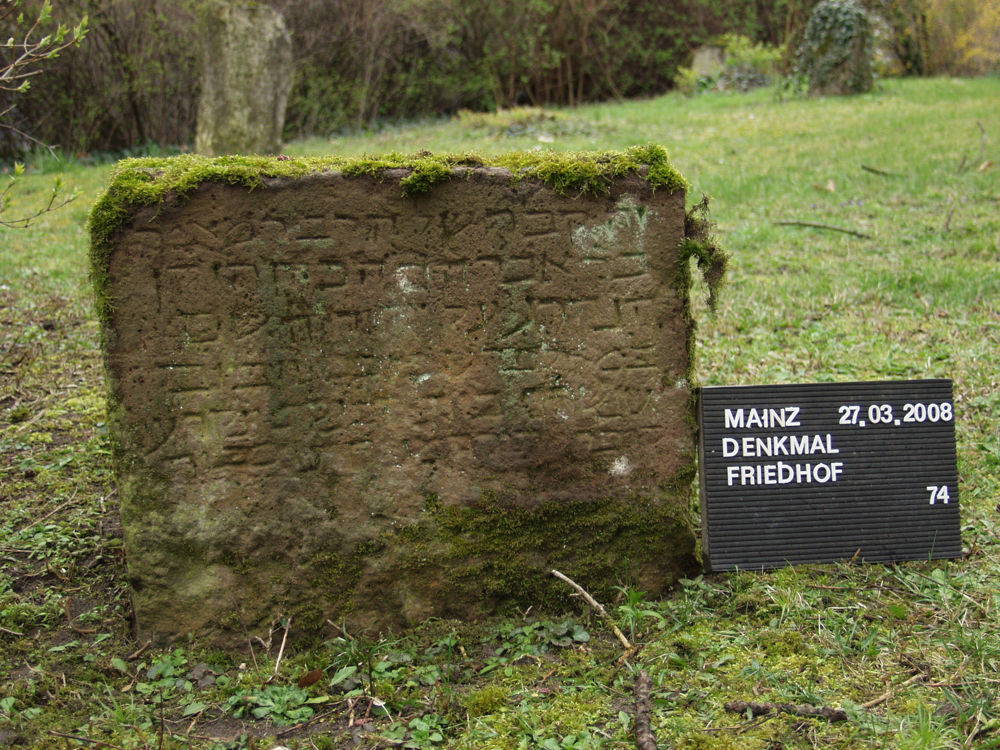
Mainz – Gedenkfriedhof: mz1-2203
foto: LDA Mainz
זה קבר של הרב ר׳ מאיר בר אברהם הכהן הזקן הנהרג על יחוד השם במ״א לפרט כ״ז בסיון ביום שנשרף בית הכנסת ונקרעו סיפרי תורה מנוחתו כבוד
- place of burial
- Mainz
- date of death | date of event
- 1281-06-15 | 27. Sivan 5041
- name
- Meir b. Awraham HaCohen
- event
- destruction of the synagogue and the torascrolls:
- ביום שנשרף בית הכנסת ונקרעו סיפרי תורה
- concept
- הנהרג על יחוד השם
- dislocation
- headstone was found by workers on June 5, 1899 in
the cellar of the inn
Zur Stadt Mainz
in the streetGroße Bleiche
source for history of literature
| גם חסידה בשמים |
| פה שוכבת הדרת הנשים |
| אף גם עדים וצבי תפארתם |
| גמלה חסד עם הרשים |
| לזמנה היתה כתר מכתם |
| בת פו״מ כהר״ר יוסף |
| פופרט אשת כ״ה משה |
| אפינהיי׳ הגובה באלטונא |
| נפטר׳ ונקבר׳ יום ב׳ ך״ז טבת |
| שנת כצפור נודדת מקנה |
| תנצב״ה |
- place of burial
- Hamburg
- name(s)
- Vogel (in acrostic)
- father Josef Popert
- husband Moshe Oppenheim
- task
- הגובה באלטונא charity administrator
- date_of_death
- 03.01.1791 | 27. Tewet 5551
- symbol
- bird
- style
- rhyme, meter, acrostic, chronostic, play on words
- id
- hha-1678
- inventarisation: photographic record and – if possible – map
- documentation: and digital editing
- damage description
- restoration plan
- monitoring restoration works
- documentation (description and photo)
Translation tool
Identifies quotations, names, places, dates, idioms – dynamic dictionaries
developed by T. Kollatz
cooperation and re-use
- based on several export and exchange formats
- EpiDoc TEI XML
- RDF-XML and/or SVG Graph via XTriples Webservice based on XTriples configuration file and EPIDOC TEIXML
- RTF via TUSCRIPT based on EpiDoc TEIXML
XTriples
XTriples is a generic webservice to extract RDF statements from XML resources.With the XTriples webservice you can crawl XML repositories and extract RDF statements using a simple configuration based on XPATH/XQuery expressions.The webservice can be used with direct POST, form-style POST or GET requests.
A Cemetery is a spatial ensemble of timebound objects
Spatial relations
looking for patterns – changing perspectives
| close reading | distant reading |
|---|---|
| zoom in | zoom out |
| single object | ensemble |
| object | context |
| discovering patterns | units: rows | fields |
Re-Use – Hackathon
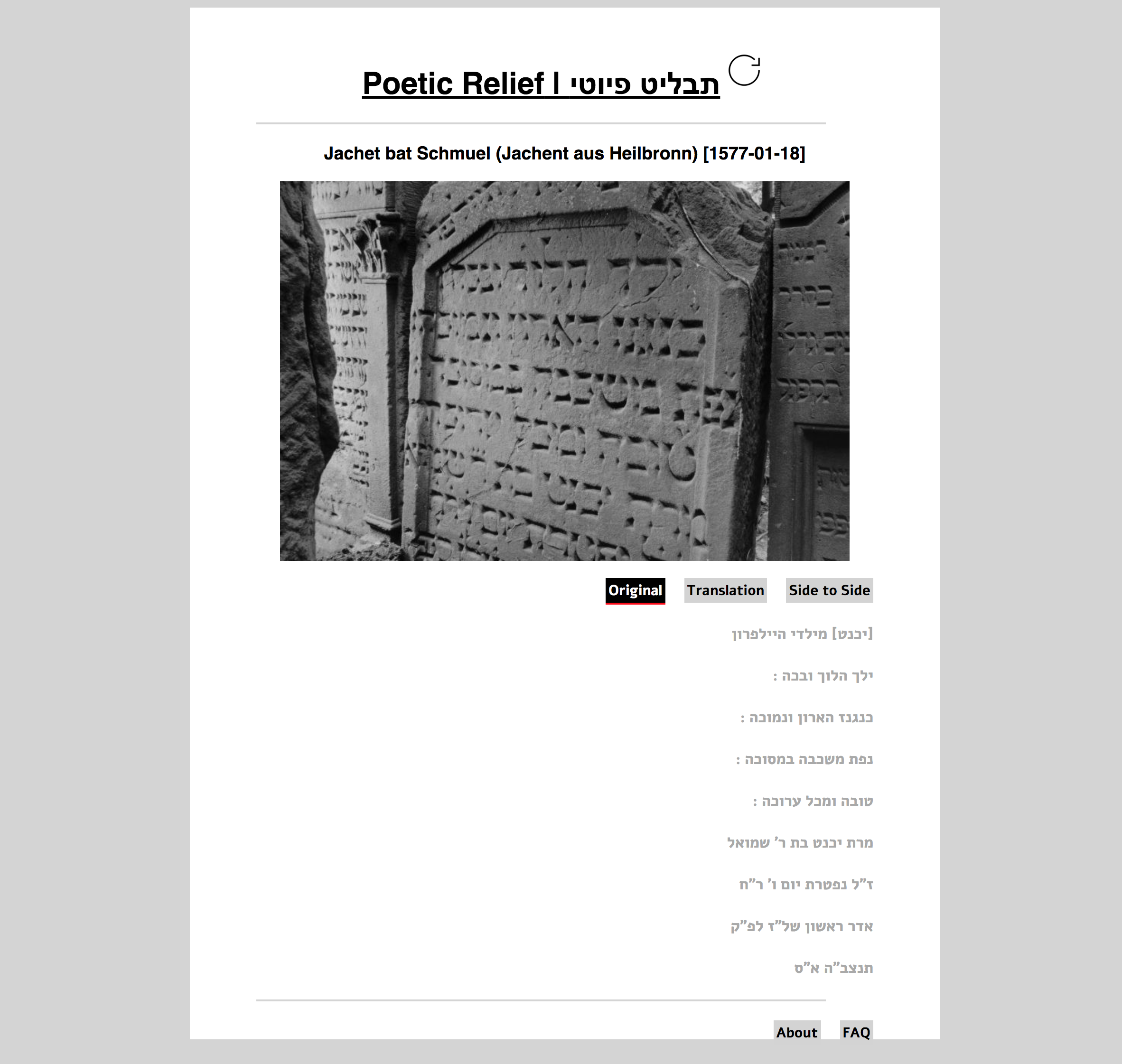
/TEI/teiHeader/fileDesc/titleStmt/title
/TEI/facsimile/graphic[1]
//*[@type='edition']
//*[@type='translation']During the first German cultural hackathon, Coding da Vinci, where the Steinheim Institute acted as participating cultural institution and partner, the epidat dataset was presented and the website was developed from it in order to present the grave inscriptions in a new way.
Re-Use – Researchdata
DHd2016 Leipzig / Pre-Conference Workshop For the visualisations, data sets from the Salomon Ludwig Steinheim-Institut for Jewish-German History and the Academy of Sciences and Literature | Mainz have been used.
<particDesc>
<listPerson>
<person xml:id="aha-13-1" sex="1">
<persName>Elieser ben Josef Hakohen</persName>
<death when="1879-12-08"/>
</person>
<person xml:id="aha-13-2" sex="1">
<persName>Jehuda ben Josef Hakohen</persName>
<death when="1879-12-09"/>
</person>
<listRelation>
<relation name="parent" active="#aha-21-1 #aha-48-1" passive="#aha-13-1"/>
<relation name="sibling" mutual="#aha-50-1 #aha-13-1"/>
<relation name="sibling" mutual="#aha-13-1 #aha-13-2"/>
</listRelation>
</listPerson>
</particDesc>
Re-Use – genealogy
Inspiration for this example drawn from a discussion about visualizing XML based relationships on the TEI mailinglist. Credits and thanks to Thomas Kollatz for the idea. The RDF extraction is modelled on FOAF to represent persons, BIO to represent dates of death and REL to build family relations between persons. Visualization is done using the Sgvizler library and it's Dracula Graph implementation.
about XTriples
RiR-project 2012-2015 | template: Howto make a dynamic map
shape and form: switching arches
Change in funeral tradition happens slowly. Change manifests itself not only in textual tradition. Cultural change is also reflected in the use of (new) forms. Text and form do not develop synchronously
shoes
- first a symbol for relation between persons and houses
- then the former housesymbol became part of family name
- but these symbols also depicting contemporary design as well as everyday culture
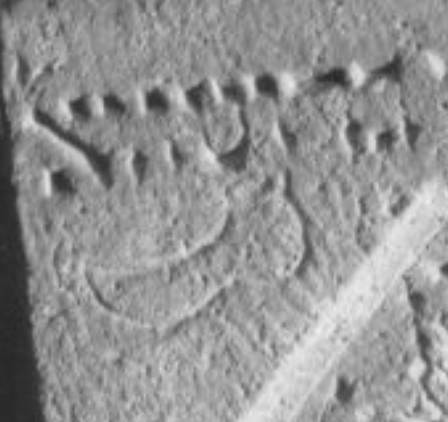

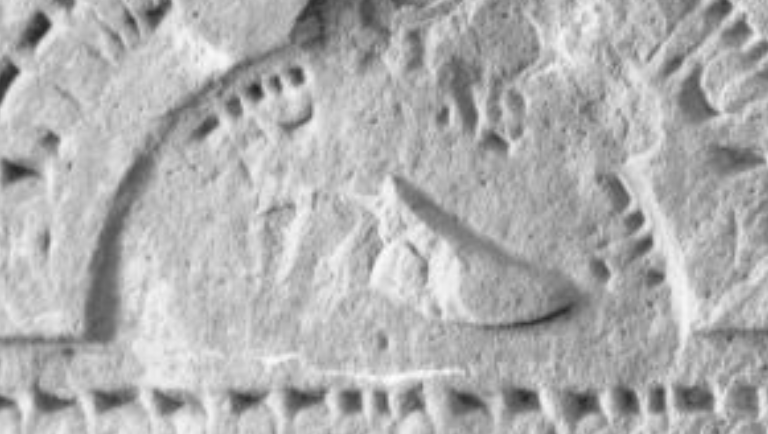
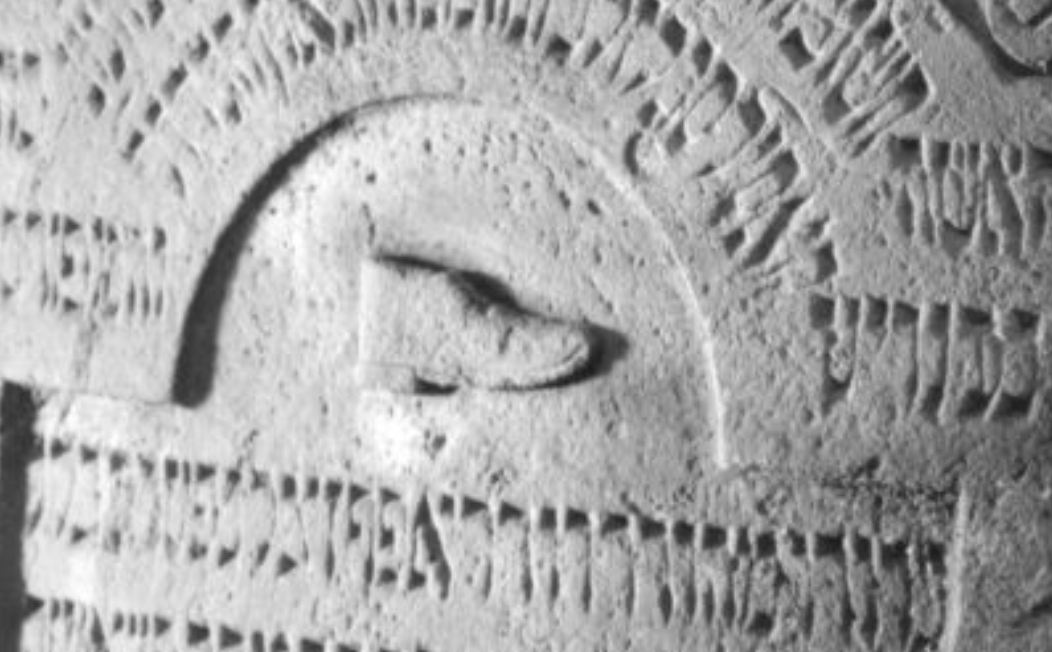
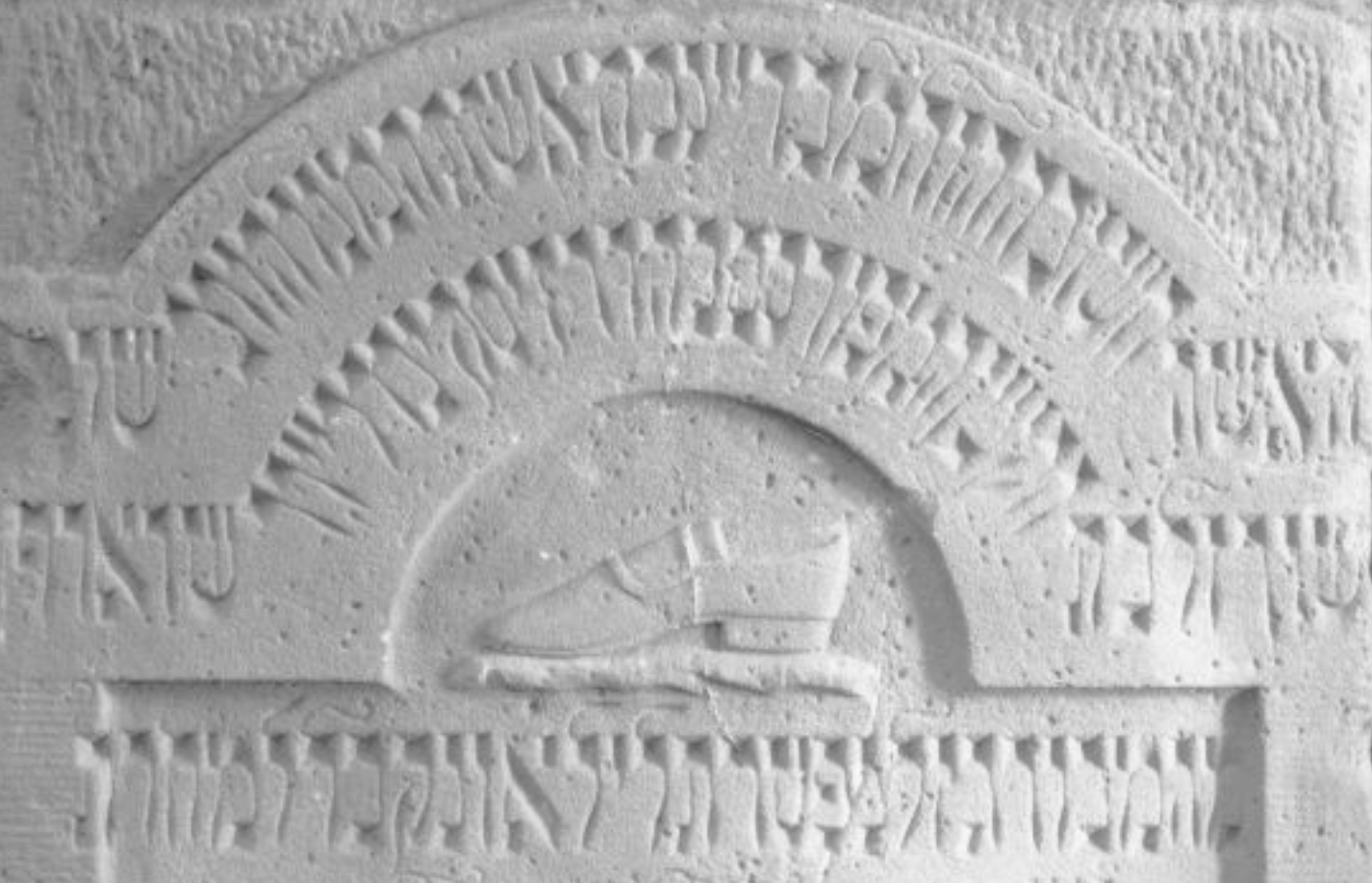
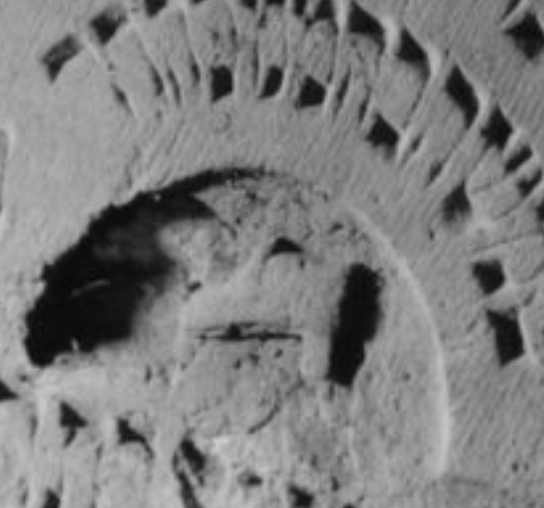
sharing data
epidat personal data are visible outside our limited domain, e.g. in the Deutsche Digitale Bibliothek
by referring to the unique identifier provided by the German National Library
<person xml:id="ffb-80-1" sex="1">
<persName
ref="http://d-nb.info/gnd/11879132X">
Meir Rothschild ben Anschel Rothschild
</persName>
<death when="1812-09-19"/>
</person>
subject predicate object .
epidat-ID sameAS GND-ID .
ffb-80-1 sameAS 11879132X .
3D model of Jewish Cemetery Mainz
- School of Technology – Geoinformatics and Surveying Mainz had made with students a terrestrial laserscan
- Steinheim-Institut (epidat) has worked on edition of the cemeterey and has structured data
- Torsten Schrade, Academy of Science and Literature, Mainz, had developed a webservice to extract RDF statements from XML-Data
- joint workshop on linking scatter plot points (3D model) with epigraphic research Data (epidat/EpiDoc TEI XML) via the XTriples Webservice: RDF-Lifting from XML
Sharing Data
| IIP Inscriptions of Israel | Palestine | epidat Research Platform for Jewish Epigraphy | DIO Deutsche Inschriften Online | |
|---|---|---|---|
| online | 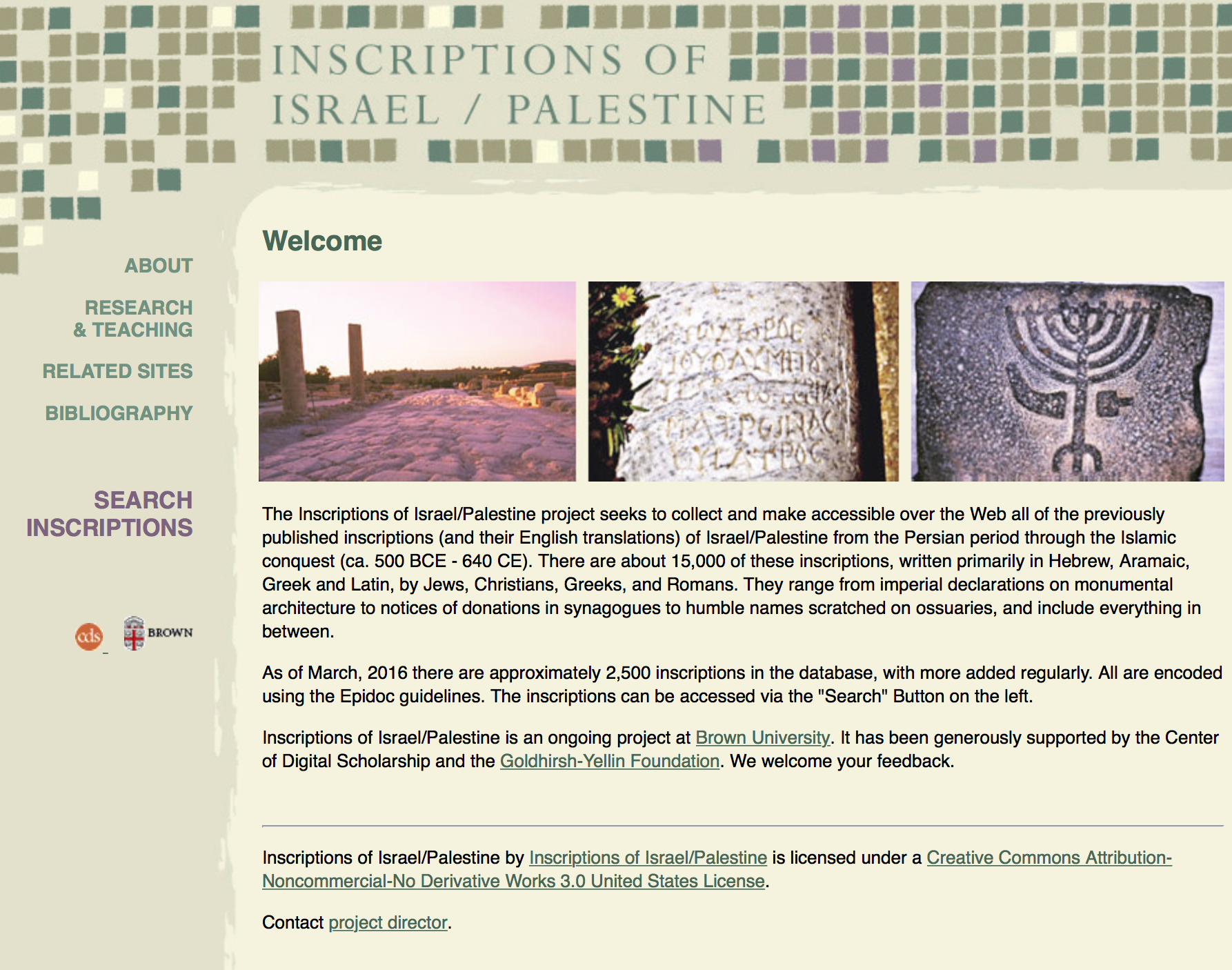 |
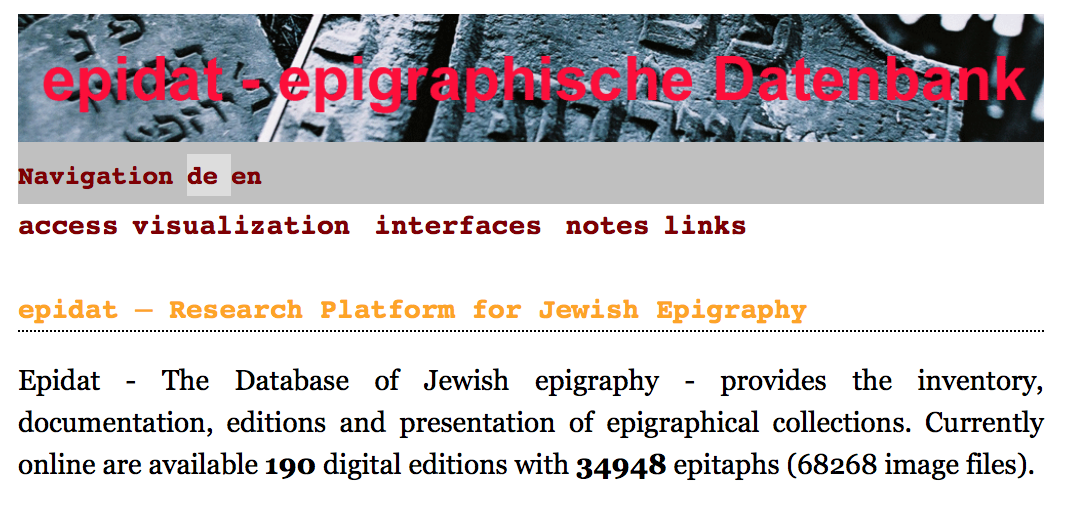 |
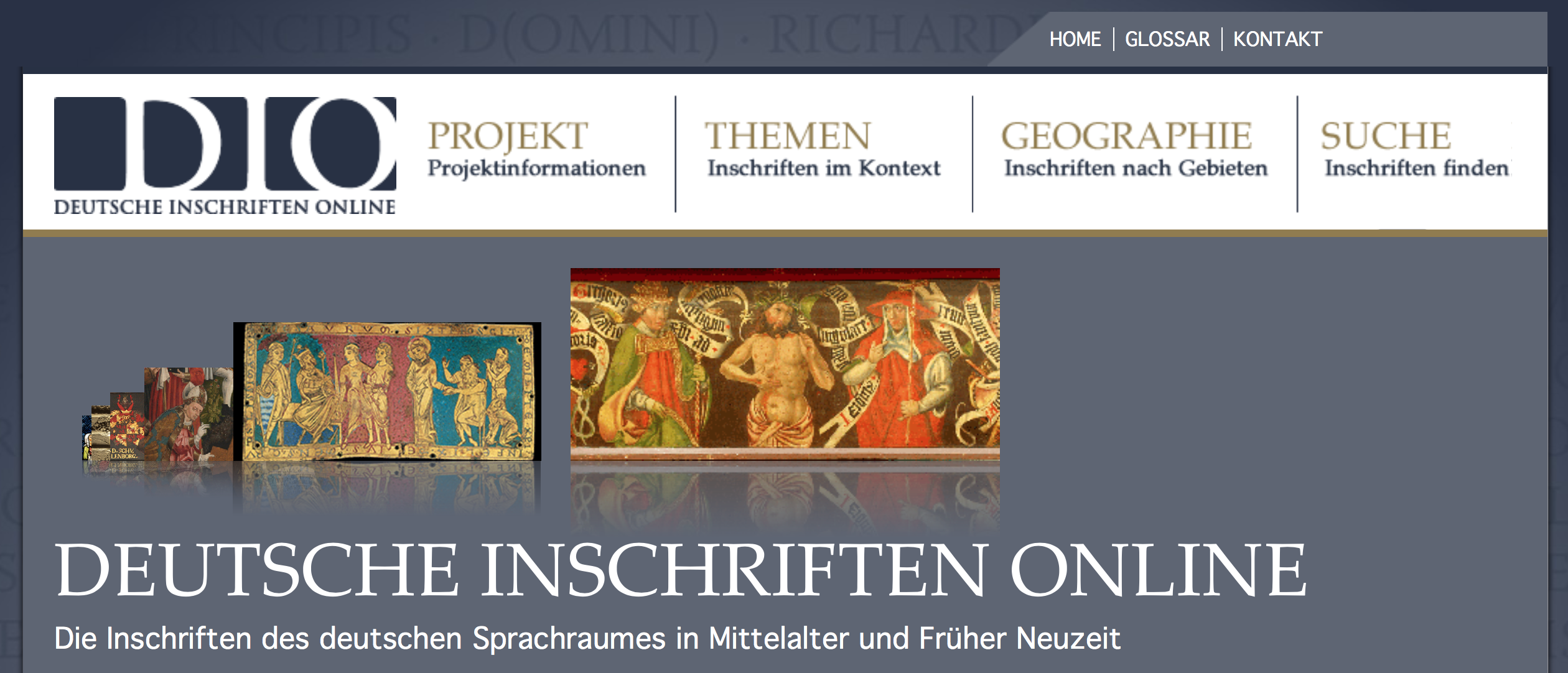 |
| time | 500 BCE - 640 CE | midth 11th - 20th century | 500-1650 CE |
| space | Israel Palestine | Germany Netherlands Czechia Lithuania | Germany Austria South Tyrol |
| Genre | Different | Funeral Inscriptions | Different |
| Format | EpiDoc: TEI XML for Epigraphic Documents | ||
| Example | QUAMR0001 | ffb-80 | 34-561 |
Genderdistribution
bar chart Legende
| 1 | male |
| 2 | female |
| 0 | unknown |
| 9 | not defined |
Configuration

Visualisierung http://app.rawgraphs.io
Max Grüntgens, Thomas Kollatz: Annotieren, analysieren, visualisieren. Repositorien mergen, analysieren und visualisieren, Darmstadt 2018
How to harvest epidat records?
epidat provides access to all collections and their resources of the epidat collection.
Each<resource>is part of a<collection>which is part of all epidat-<collections>.
F I N I S
סוף דבר הכל נשמע
Literature & Software
on epidat related projects
- Arera-Rütenik, Tobias; Kollatz. 2016. “Interdisziplinäre Perspektiven Auf Grabmale Und Visualisierung Räumlicher Strukturen. Ergebnisse Eines Projektes Zu Historischen Jüdischen Friedhöfen.” Objekt Und Schrift. Beiträge Zur Materiellen Kultur Des Jüdischen Jüdisches Kulturerbe (1): 25–29.
- Bender, Michael, Rapp, Andrea, and Thomas Kollatz. 2018. “Objekte Im Digitalen Diskurs – Epistemologische Zugänge Zu Objekten Durch Digitalisierung Und Diskursive Einbindung in Virtuelle Forschungsumgebungen Und -Infrastrukturen.” In Berlin Studies of the Ancient World. Objektepistemologien. Berlin.
- Kollatz, Thomas. 2015. “Epidat - Datenbank Zur Jüdischen Grabsteinepigraphik. Inventarisierung Und Dokumentation Historischer Jüdischer Friedhöfe.” In Wenn Das Erbe in Die Wolken Kommt. Digitalisierung Und Kulturelles Erbe, 161–68. Essen: Klartext.
- ———. 2018. “EPIDAT. Research Platform for Jewish Epigraphy.” In Crossing Experiences in Digital Epigraphy. From Practice to Discipline. Digital Epigraphy, 231–239. Warsaw, Poland: De Gruyter open. Crossing Experiences in Digital Epigraphy: From Practice to Discipline.
- Kollatz, Thomas, and Max Grüntgens. 2018. “Korpusbasiertes Arbeiten und epigraphische Datenbanken. Möglichkeiten und Herausforderungen am Beispiel von EPIDAT und DIO.” Osnabrücker Beiträge zur Sprachtheorie 92: 157–74.
RDF-Lifting with XTriples
- Max Grüntgens, Thomas Kollatz, XML2RDF – Extracting RDF Statements From XML Resources With XTriples. Workshop at the DH2019 Conference in Utrecht, 09.07.2019, https://dh2019.adho.org/workshops/.
- Julian Jarosch, Andreas Kuczera, Torsten Schrade and Tariq Youssef, Graphentechnologien in den Digital Humanities: Methoden und Instrumente zur Modellierung, Transformation, Annotation und Analyse. Workshop and conference paper for the 6th DHd conference, 26.03.2019, Mainz/Frankfurt, DOI 10.5281/zenodo.2596095, p.33-36.
- Max Grüntgens and Thomas Kollatz, Two become one. Lifting TEI EpiDoc encoded corpora to RDF. The case of DIO and EPIDAT. Poster presentation at the Linked Pasts IV conference, 12.12.2018, Mainz. (Poster)
- Max Grüntgens and Thomas Kollatz, Repositorien mergen, analysieren und visualisieren. Presentation at the DARIAH Grand Tour, 20.09.2018, Darmstadt. (Slides)
- Torsten Schrade, Semantische Technologien und Fragen des Raums. Presentation at the workshop on 'Digitale Raumdarstellungen. Barocke Kunst im Kontext aktueller Zugriffe der Spatial Humanities' at the Phillips-Universität Marburg, 04.04.2017. (Slides)
- Torsten Schrade, Grundlagen von Linked Open Data (LOD) für die Nachnutzung von Forschungsdaten. Workshop at the conference of the working group on eHumanities of the Union of the German Academies of Sciences, 11.11.2016, Düsseldorf. (Slides)
- Torsten Schrade, CIDOC-CRM Modellierung epigraphischer Fachdaten mit dem XTriples Webservice. Presentation at the DARIAH-DE workshop on 'Research infrastructures for the Humanities and CIDOC-CRM', 25.07.2016, Darmstadt. (Slides)
- Max Grüntgens and Torsten Schrade: Data Repositories in the Humanities and the Semantic Web. Modelling, Linking, Visualising. Conference paper and presentation at the 1st WHiSe Workshop / ESWC 2016, 29.05.2016, Anissaras - Crete, URN urn:nbn:de:0074-1608-8, p. 53-63. (Slides)
- Torsten Schrade, Geisteswissenschaftliche Fachdatenrepositorien im Semantic Web. Modellierung, Vernetzung, Visualisierung. Conference paper and presentation at the 3rd DHd conference in Leipzig, 07.-12.03.2016, ISBN 978-3-941379-05-3, p. 215-218. (Slides)
- Torsten Schrade, Digitale Briefeditionen im Semantic Web. Der XTriples Webservice – Semantische Aussagen aus XML. Presentation at the conference of the working group on eHumanities of the Union of the German Academies of Sciences, Heidelberg, 15.09.2015. (Slides)
EpiDoc and Digital Epigraphy
- Tom Elliott, Gabriel Bodard, Hugh Cayless et al. (2006-2017), EpiDoc: Epigraphic Documents in TEI XML. Online material, available: <http://epidoc.sf.net>
- EpiDoc on facebook
- Julia Flanders; Charlotte Roueché: Gentle Introduction To Mark-Up For Epigraphers
- Bodard G. & Stoyanova S. 2016. Epigraphers and Encoders: Strategies for Teaching and Learning Digital Epigraphy. In: Romanello M. & Bodard G, Digital Classics Outside the Echo-Chamber. London: Ubiquity Press.
- H. Cayless; C.M. Roueché; Tom Elliott; Gabriel Bodard (2009): "Epigraphy in 2017." Digital Humanities Quarterly 3.1. http://digitalhumanities.org/dhq/vol/3/1/000030/000030.html
Recent Presentations
- Kollatz, Thomas. 2018a. “Jewish Calendar Dates in Epidat: Research Platform for Jewish Epigraphy.” presented at the Godot workshop: Non-Gregorian Calendar Dates in Digitial Humanities, Heidelberg, November 26. https://kollatzthomas.github.io/godot/.
- ———. 2018b. “Epigraphic Research Data as Source for Onomastics and Genealogy: The Case of ‘Epidat’, the Research Platform for Jewish Epigraphy.” presented at the GENEALOGY AND THE SCIENCES, The David Lopatie Conference Centre, Weizmann Institute of Science, Rehovot, Israel, December 17. https://kollatzthomas.github.io/genealogy.
- ———. 2018c. “Digitale Approaches to Cemeteries: Preservation and Education.” presented at the All that remains: Education and Conservation of Jewish Funerary Culture, Utrecht.
- ———. 2018d. “Epigraphische Datenbanken zu den Schum-Gedenkstätten: Status Quo und Desiderata.” presented at the Intensivworkshop Informationssysteme, Mainz Coworking Area im Dock 39.
topic related presentations
- ———.2019a. “epidat – Forschungsplattform zur jüdischen Grabsteinepigraphik: Edition, Kommentierung, Annotation, Visualisierung und Analyse jüdischer Grabmale aus neun Jahrhundert.” presented at the Vortragsreihe des IZED im Sommersemester 2018: Annotation Kommentar Erläuterung, Wuppertal
- ———. 2019b. “Evolution of a DH-Project: Turns and Trends of a Digital Epigraphic Endeavour.” presented at the Technological Tools for Manuscript Research, Ramat Gan, Bar-Ilan University, Israel, February 13. https://kollatzthomas.github.io/Bar_Ilan_paper.
- Kollatz, Thomas, and Max Grüntgens. 2018. “Annotieren, analysieren, visualisieren. Repositorien mergen, analysieren und visualisieren.” presented at the DARIAH-DE Grand Tour, Darmstadt.
- ———. 2018. “Two Become One: Lifting TEI EpiDoc Encoded Corpora to RDF – The Case of DIO and EPIDAT.” Poster presented at the Linked Pasts IV: Views From Inside The LOD-cloud, Mainz, December 12. https://digicademy.github.io/Two_become_one/.
- Andreas Kuczera, Thomas Kollatz und Torsten Schrade: Methods and Tools for visualising Digital Humanities data sets, DHd 2016 Leipzig
Software
- Impress.js (presentation)
- Magnific Popup (Lightbox)
- Unite Gallery (photo gallery)
